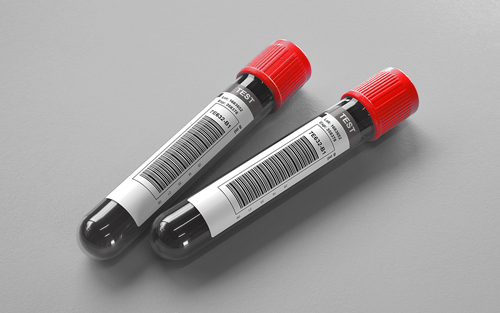SC5b-9
Ordering Recommendation
Use to detect increased complement activation in complement-related diseases. May also be used to aid in monitoring the effectiveness of anticomplement therapies such as eculizumab.
New York DOH Approval Status
Specimen Required
Pink (K2EDTA), tan (K2EDTA), royal blue (K2EDTA), or lavender (EDTA).
Separate plasma within 2 hours (1 hour is preferable) by centrifugation. Transfer plasma (minimum 0.5 mL) to an ARUP standard transport tube and freeze immediately.
CRITICAL FROZEN. Separate specimens must be submitted when multiple tests are ordered.
Nonfrozen specimens. Specimens exposed to repeated freeze/thaw cycles. Grossly hemolyzed, lipemic, and icteric specimens. Serum samples. Heparinized and lithium samples.
Ambient: Unacceptable; Refrigerated: Unacceptable; Frozen: 30 days
Methodology
Quantitative Enzyme-Linked Immunosorbent Assay (ELISA)
Performed
Sun, Wed
Reported
2-12 days
Reference Interval
| Test Number |
Components |
Reference Interval |
|---|---|---|
| SC5b9 Soluble Terminal Complement Complx | Less than or equal to 260 ng/mL |
Interpretive Data
Elevated soluble C5b-9 (SC5b-9) levels indicate recent or ongoing activation of the complement system, while normal or reduced levels suggest no excessive activation. High SC5b-9 concentrations are associated with transplant-associated thrombotic microangiopathy (TA-TMA), a complication of hematopoietic stem cell transplants. Increased SC5b-9 may also occur in various conditions involving primary or secondary complement activation, such as immune-complex disease, infection, atypical hemolytic uremic syndrome, and C3 glomerulopathies. Due to a low specificity for SC5b-9 testing, results should be interpreted in combination with other clinical and laboratory evidence of disease activity. Plasma SC5b-9 levels may be used to monitor the efficacy of complement inhibitor drugs, as elevated levels suggest insufficient complement blockage to effectively prevent the formation of the terminal attack complex.
Laboratory Developed Test (LDT)
Note
Hotline History
Hotline History
CPT Codes
86160
Components
| Component Test Code* | Component Chart Name | LOINC |
|---|---|---|
| 3017917 | SC5b9 Soluble Terminal Complement Complx | 93244-2 |
Aliases
- Soluble terminal complement complex
- Soluble membrane attack complex
- Membrane attack complex
- Terminal complex
- Terminal activation product
- MAC
- sMAC
- SC5b9
- TCC
















